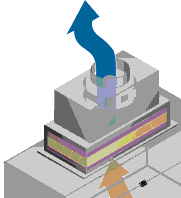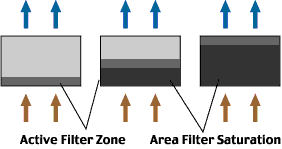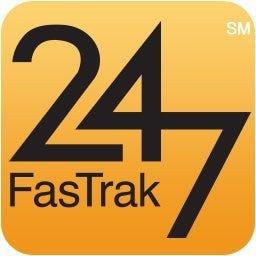- (714) 578-6016
Hours Mon - Fri, 07:00 AM - 06:00 PM (Pacific Time)
Worldwide Pricing and Secure Global Shipping Available!
- Get a QuickQuote
- Free Consultation (714) 578-6016
- Track Order Sorry, no orders are open for tracking
- Home
- Benchtop Ductless Exhaust Fume Hoods

Product Group:
2900-PP-05
2900-PP-05 71369
Benchtop Ductless Exhaust Fume Hoods
Read more
Manufactured By: Terra Universal
Print
Want a quote quickly ?
Submit a QuickQuote requestProduct Details
Product Details
Product Details
- High-capacity ductless fume hood with dual 600 CFM blowers helps dissipate and remove low concentration fumes from your work area.
- Activated carbon filters (order separately) remove common organic fumes to eliminate the need for ducting to a building exhaust system.
- All-polypropylene hood construction ensures broad chemical resistance.
- Open-bottom design allows for placement on any existing work surface.
- Blower housing clips in place for easy filter replacement.
- Vibration-isolating stands available separately.
- Air speeds above 100 ft/min (0.51 m/s) below the sash, offering a high level of protection for operators
- Static-dissipative PVC sash provides splash protection with 5" of vertical working clearance.
- Sash lifts out of the way to accommodate tall or bulky equipment.
- LED illuminator provides comfortable lighting of the work space within the hood.
- Built-in swing vane anemometer for validation purposes.
- NOTE: Not a substitute for personal protective equipment. Always use appropriate protective equipment such as safety glasses, gloves, protective clothing, and/or face masks.
- NOTE: Not intended for applications that produce high concentrations of hazardous chemical fumes. Not intended for biohazards or compounds that can produce potentially toxic dust.
Benchtop Ductless Exhaust Fume Hood
Standard Features
- A Polypropylene constructionPolypropylene construction resists acids and other chemicals
- B Fan Filter UnitDual 1200 CFM (2038.81 m³/h) blowers for safe containment: air velocity >180 fpm (0.91 m/s) with 5" (127 mm) vertical access
- C Fluorescent lightFluorescent light
- D Quick-release housingQuick-release blower/filter housing for fast, easy filter replacement
- E air speed monitorIncludes swing-vane air speed monitor
Optional Features
- 1 Range of Work Station ChoicesMany work stations available. 2-piece design isolates blower vibration
Not Shown: Spill trays - Spill trays available
Features & Benefits
Features and Benefits
Learn More: Ductless Exhaust Hoods 

Print Copy Copied
Ductless Fume Hoods: An Alternative to Laboratory Exhaust Systems
Exhaust Fume Filtration

Activated charcoal, the most common purification filtration medium, adsorbs chemicals with a molecular weight above 30 and a boiling point above 60°C. Carbon filters are also effective with many other chemicals because of their particular molecular structure.
Adsorption takes place in the active filter zone, the small cross-section of the filter bed in which the material to be removed comes in contact with the filtering medium. This active filter zone moves upward as the filter becomes saturated (see illustration). When it reaches the filter's top surface, there is an initial breakthrough by the contaminant gas; thereafter the percentage of contaminant gas that escapes filtration increases until total saturation of the filter is reached.
Ductless fume hoods manufactured by Terra use activated carbon filters to eliminate most nuisance fumes and can be used in conjunction with HEPA filtration. For more hazardous chemicals like strong acids and bases, specialized Labconco filtered fume hoods can be equipped with a wider range of filters and include an array of safety sensors for breakthrough detection.
Enhancing Filter Performance

To optimize filtration efficiency, any ductless exhaust fume system must ensure that the exhaust stream is exposed to the purification medium for an adequate time. Terra exhaust purification systems satisfy this condition in several ways.
First, our specially selected impeller ventilators are designed to ensure the optimal linear velocity of the airstream—sufficient to maintain a negative pressure in the work area that prevents backflow, but low enough to allow adequate adsorption of fumes by the filtering medium. Our pre-filters also extend exposure time by reducing the airflow through the filter.
Monitoring Filter Effectiveness
A ductless exhaust fume system needs to be monitored in two areas. The user must detect the period between initial contaminant breakthrough and the point at which the contaminant gas reaches the Threshold Limit Value (TLV) for that substance. The velocity of the airstream must also be monitored to ensure an adequate negative pressure and to detect ventilator failure.
Through periodic testing of the exhaust airstream, you can determine the useful filter life in your particular application and gauge filter effectiveness with an elapsed time meter.
An electronic airflow velocity monitor also helps users ensure safe, effective operation and provides an alarm when velocity falls below a user-defined threshold.
Put Safety First!
Avoid filter use in applications involving very toxic substances, very high volumes of contaminants, and unknown or highly volatile chemical reactions. Always make sure that filters are promptly changed when the Threshold Limit Value (TLV) has been reached for any contaminant gases present.
Dual Ventilation Blower with Quick-Release Clips
Dual fans ensure fast, efficient ventilation of micro-contaminants. Quick-release clips along the polyproylene filter housing allow fast, easy filter replacement; unit lifts off hood for easy servicing.
Swinging Vane Anemometer
An air speed monitor is built into the body of the hood at the sash-level. Operators can verify safe exhaust speeds before beginning fume-generating work beneath the hood.
Dual Exhaust Fans
Powerful blowers draw fumes upward through carbon and HEPA filters before releasing the air back into the room. Outside air backfills into the hood through the sash opening, preventing the escape of fumes.
Continuous Product Improvement
At Terra, we strive to develop and produce the highest quality products for our customers to improve health, safety, performance, and yields. Our product quality is enabled by high-grade manufacturing equipment and processes, 50 years of engineering and application expertise, and our commitment to continuously improve.
Global Customer Base
At Terra, we are committed to providing top-tier equipment to customers throughout the world. Over the past 5 years, clients in over 100 countries have purchased equipment from Terra.
Available Accessories
Popular Accessories
For a full list of accessories, select a product then click Choose Accessories on that product page.
Activated Charcoal Filter
Activated charcoal filters remove a wide range of chemicals from the airstream to allow ductless fume hood operation. Bonded charcoal minimizes void spaces, improves efficiency, reduces particle sloughing. Not for use with hazardous substances.HEPA Filters Capture Micro-Contaminants
HEPA (High-Efficiency Particulate Air) Filters rated 99.99% efficient with particles 0.3 microns and larger in diameter.Stainless Steel Spill Tray
Stainless steel spill tray safely contains a broad range of chemicalsTwo-Piece Vibration Isolation Stands
Hood stands are available in a two-piece configuration that isolates vibration generated by the hood fan, reducing motion sickness associated with microscopy work (shown with laminate work surface).UV Germicidal Lamp
The V-Ray germicidal UV lamp is installed within a Terra hood to inhibit microbial growth on the work surfaceBenchtop Fume Hood with Automatic Height Adjusting Table
Benchtop fume hoods help ventilate and remove chemical fumes and particles, allowing for safe indoor release of exhaust. They can also easily mount to an automatic height adjusting table (28"-43"H). Perfect for workstations with heavy or fragile equipment.
Products similar to this one
Products similar to this one
Other products you may find relevant
- Group of 21 productsErgoHeight® Electric Height Adjustable Cleanroom Workstations FromAs low as $1,659Some ship in 1 - 3 days
- Group of 18 productsElite and Eton Series Ergonomic Laboratory Chairs by BioFit FromAs low as $402Some ship in 5 - 7 days
- Group of 8 productsSure-Grip® EX Undercounter Flammable Safety Cabinets by Justrite FromAs low as $1,136Some ship in 8 - 12 days
- Group of 10 productsSure-Grip® Flammable Liquid EX Safety Can Storage Cabinets from Justrite FromAs low as $1,120Some ship in 3 - 5 days
Buy Accessories
PASSWORD REQUIRED
for

On a tight schedule? Choose FasTrak 24/7 Priority Service to help meet your critical schedule for Terra-manufactured products, either before or after your order is placed.*
- FasTrak 24/7 provides a 24/7 commitment to meet the shipping date YOU specify, regardless of quoted lead times.
- FasTrak 24/7 assigns a dedicated production team plus a dedicated senior expeditor working three shifts to meet your delivery specification.
- FasTrak 24/7 guarantees* to meet the agreed-to specified ship date.
Call for pricing. FasTrak service fees cover costs of additional services only, without additional profit.
* Terra's FasTrak services limited guarantee: to ship on the ESD or date specified OR to refund up to 100% of FasTrak charges. This guarantee covers no direct, special, consequential or other damages and is strictly limited to up to 100% of the amount paid for FasTrak service. When a specified ship date is missed due to factors outside Terra's control (vendor performance, deliveries by shipping companies, etc.) and random factors such as accidents, the credit of up to 100% of the FasTrak 24/7 may not apply. FasTrak service requested after order placement will be quoted and accepted based on available time remaining before required ship date.
Ductless Fume Hoods: An Alternative to Laboratory Exhaust Systems
Exhaust Fume Filtration

Activated charcoal, the most common purification filtration medium, adsorbs chemicals with a molecular weight above 30 and a boiling point above 60°C. Carbon filters are also effective with many other chemicals because of their particular molecular structure.
Adsorption takes place in the active filter zone, the small cross-section of the filter bed in which the material to be removed comes in contact with the filtering medium. This active filter zone moves upward as the filter becomes saturated (see illustration). When it reaches the filter's top surface, there is an initial breakthrough by the contaminant gas; thereafter the percentage of contaminant gas that escapes filtration increases until total saturation of the filter is reached.
Ductless fume hoods manufactured by Terra use activated carbon filters to eliminate most nuisance fumes and can be used in conjunction with HEPA filtration. For more hazardous chemicals like strong acids and bases, specialized Labconco filtered fume hoods can be equipped with a wider range of filters and include an array of safety sensors for breakthrough detection.
Enhancing Filter Performance

To optimize filtration efficiency, any ductless exhaust fume system must ensure that the exhaust stream is exposed to the purification medium for an adequate time. Terra exhaust purification systems satisfy this condition in several ways.
First, our specially selected impeller ventilators are designed to ensure the optimal linear velocity of the airstream—sufficient to maintain a negative pressure in the work area that prevents backflow, but low enough to allow adequate adsorption of fumes by the filtering medium. Our pre-filters also extend exposure time by reducing the airflow through the filter.
Monitoring Filter Effectiveness
A ductless exhaust fume system needs to be monitored in two areas. The user must detect the period between initial contaminant breakthrough and the point at which the contaminant gas reaches the Threshold Limit Value (TLV) for that substance. The velocity of the airstream must also be monitored to ensure an adequate negative pressure and to detect ventilator failure.
Through periodic testing of the exhaust airstream, you can determine the useful filter life in your particular application and gauge filter effectiveness with an elapsed time meter.
An electronic airflow velocity monitor also helps users ensure safe, effective operation and provides an alarm when velocity falls below a user-defined threshold.
Put Safety First!
Avoid filter use in applications involving very toxic substances, very high volumes of contaminants, and unknown or highly volatile chemical reactions. Always make sure that filters are promptly changed when the Threshold Limit Value (TLV) has been reached for any contaminant gases present.





























